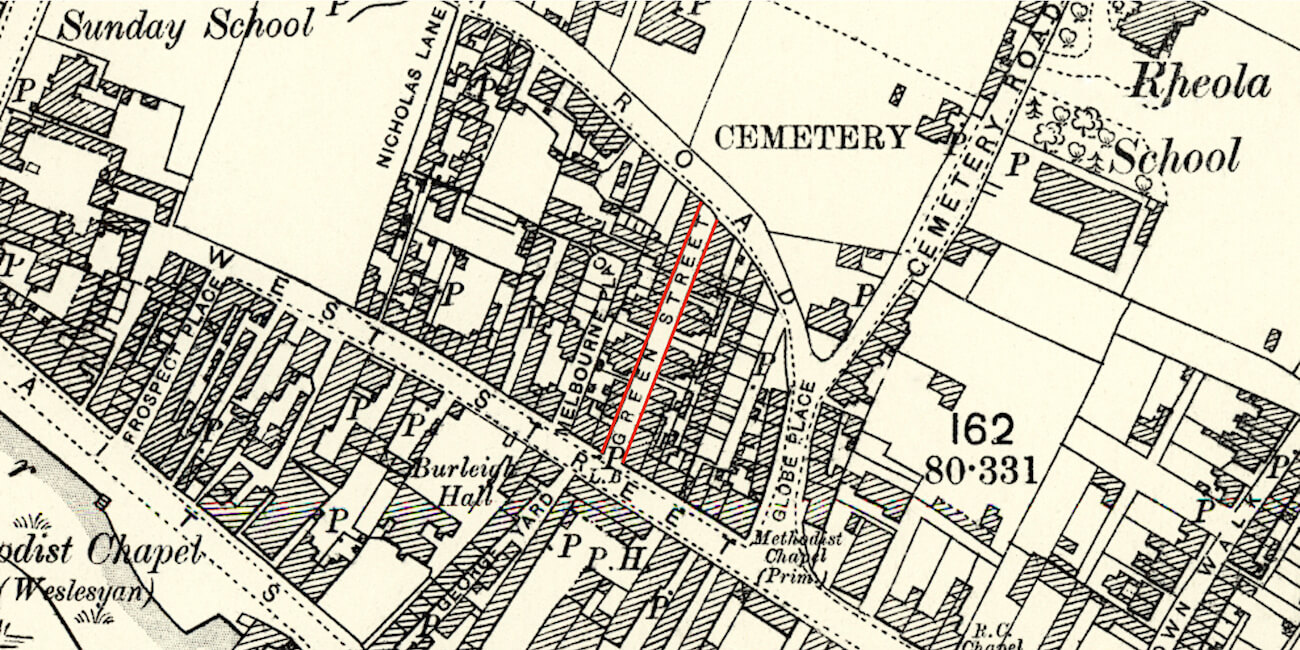It needs little imagination to picture the insanitary state of the town from 1800 onwards, with increasing population. No wonder that the death rate was high and that outbreaks of fevers, smallpox and cholera were almost of annual occurrence.
There was no water supply otherwise than the river or surface wells, themselves polluted by leakage from brick or common clay pipe drains and cesspools. I will only mention one row of cottages which I knew well as a child. They were superior too, having small back yards. In each yard was a convenience with its cesspool under and in some cases a pig sty too. His majesty “Pig” walked through the house to live or die and the contents of cesspool and dung pit alike were also carried through. The heat of a July or August day rendered the atmosphere unbearable (almost).
Scores of houses faced only little narrow yards, frequently with no ventilation at the back or at most a small sash with one or two small squares. Two bed rooms were rare, frequently only one and an open landing. One pump and one convenience for a whole row of cottages. Can one wonder that drunkenness, quarrelling and immorality were rife.
To show that this overcrowding led to neighbours’ quarrels I may say that more than once on a hot afternoon I have seen two enraged women struggling out of the narrow yards in the Sheep Market to finish their fight in the sheep pens.
Returning from the Church by “The Waits” almost every yard had its quota of cottages closely packed back to back right down to the Sheep Market.
Many residents lived in the 49 yards of St Ives. Yard owners crammed jerry-built accommodation into space behind every inn and business premises. Poor Folk's Square and Lane were amongst the most deprived areas in St Ives. John Skeeles wrote of a strip of land barely twenty yards wide in which 'the present generation would not believe the number of human habitations and occupants that were crowded on the small space between the land and Vicarage garden wall'.
There was a desperate need for more housing. John Green, a local builder, saw an opportunity. He erected rows of densely packed cottages for rent on mainly spare land to the north of what was Back Street, now West Street. The houses may have been an improvement on that available in the yards, but even when new they were only just above the standard of the poorest housing available.
John Green was hardly a retiring soul, naming the houses Green Street. He built even poorer housing in 1820 at Filbert's Walk. Initially, he called these Hemingford Green, then Green Walk.
 |
| John Green |
In 1851, 110 people lived in 22 households in a street 83 yards long. One house was uninhabited. A further 7 people lived at the Queen Adelaide, a public house built on the corner of Green Street and Back Street. Several paupers depended on poor relief for their existence. Hawkers, agricultural labourers and charwomen were common occupations.
The house of John Hollidge, master shoemaker, was the 'cosiest'. In four rooms lived John, his wife, their eight children aged between 19 years and 1 year, plus John's three shoemaking employees. A total of thirteen.
 |
| The Queen Adelaide and Green Street, 1920s. |
Classed as slums, Green Street was demolished in 1967 to make way for the Globe carpark. To view it's location on a satellite map click Google Maps. Nicholas Lane, a narrow alley west of the carpark, still exists and gives a sense of how congested the area once was to live in.
Further reading
Click any of the links below to read copies of records for Green Street.
1841 census
1851 census
1861 census
1871 census
1881 census
1891 census
1901 census
1911 census
1939 register



No comments:
Post a Comment